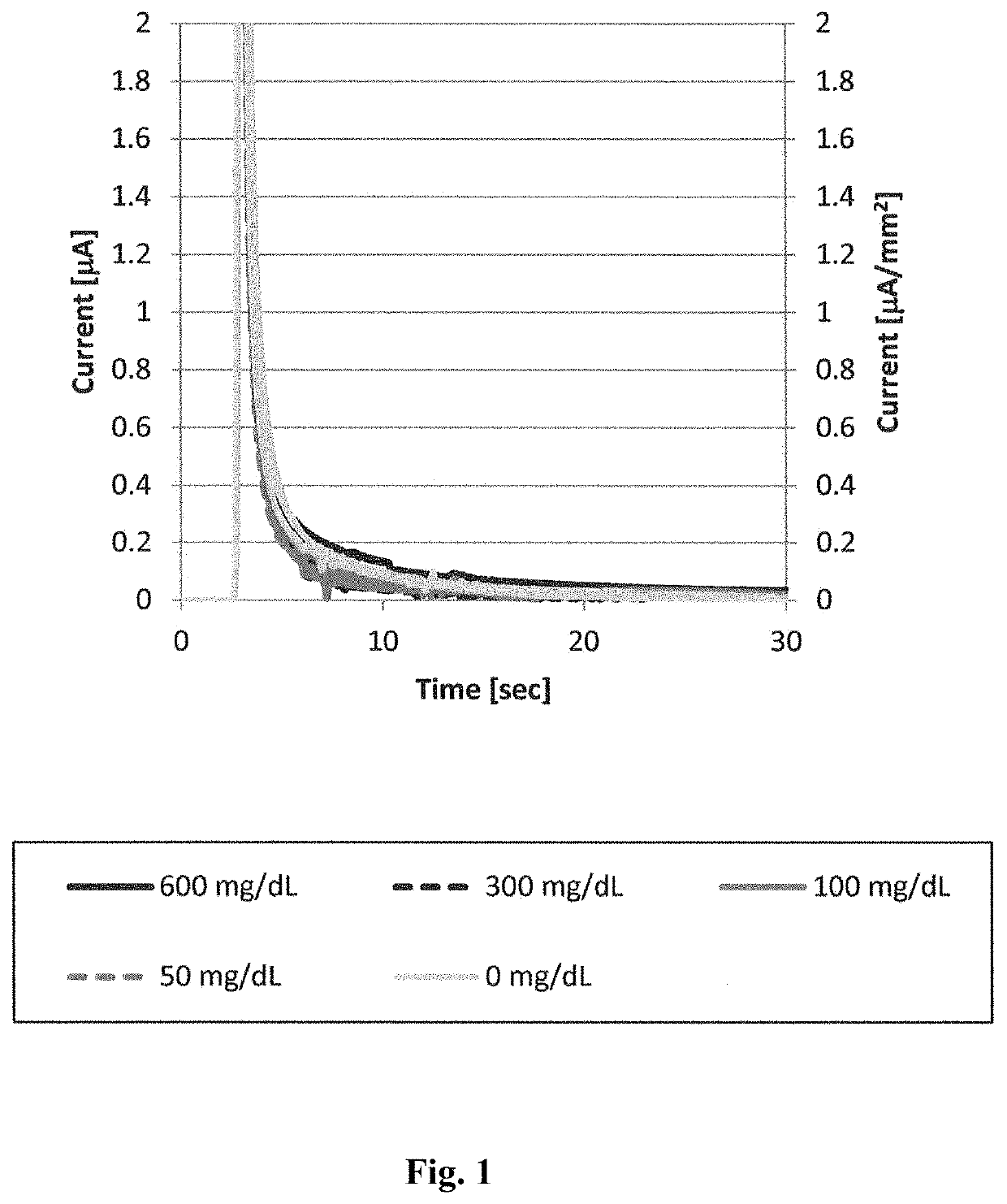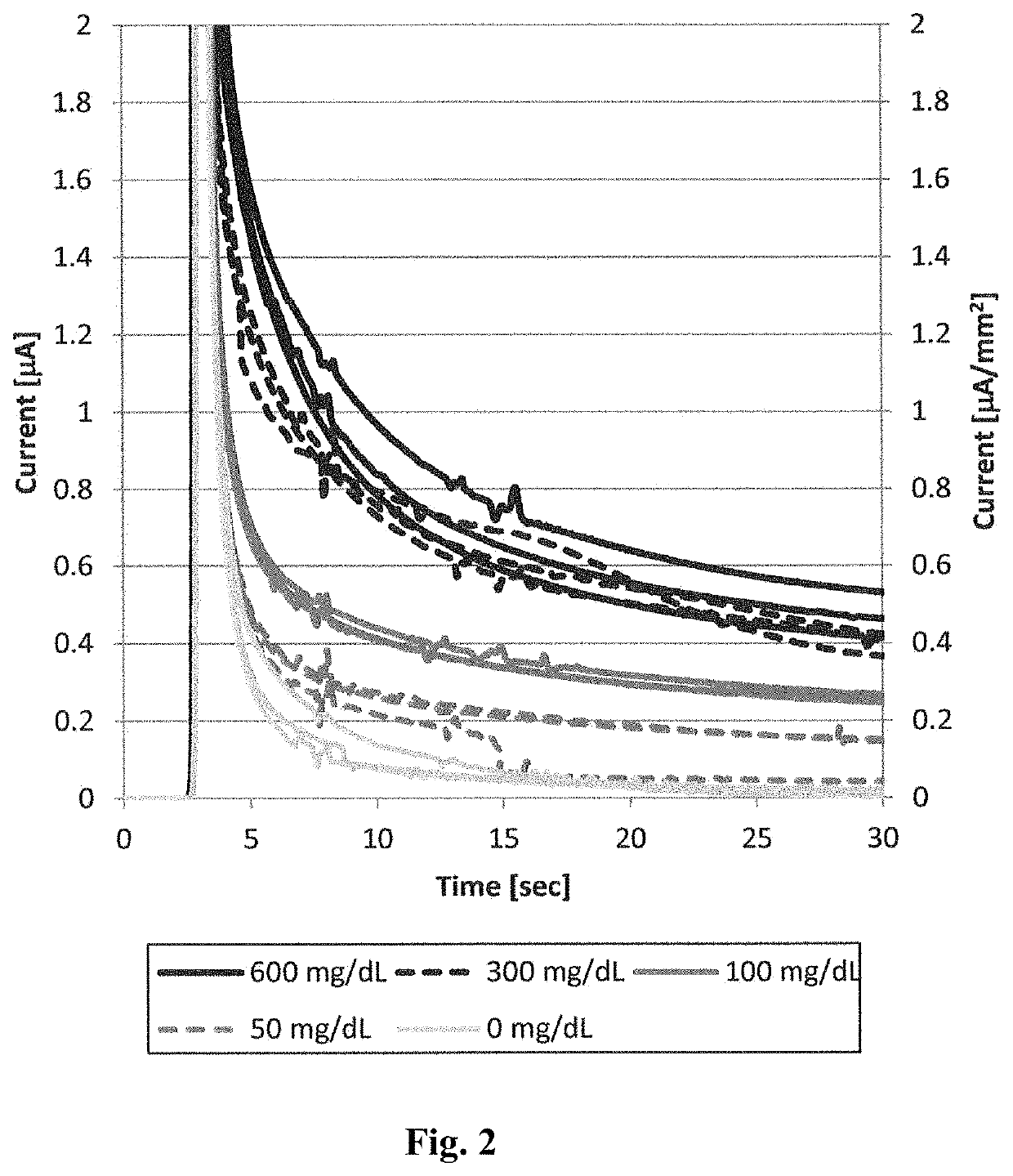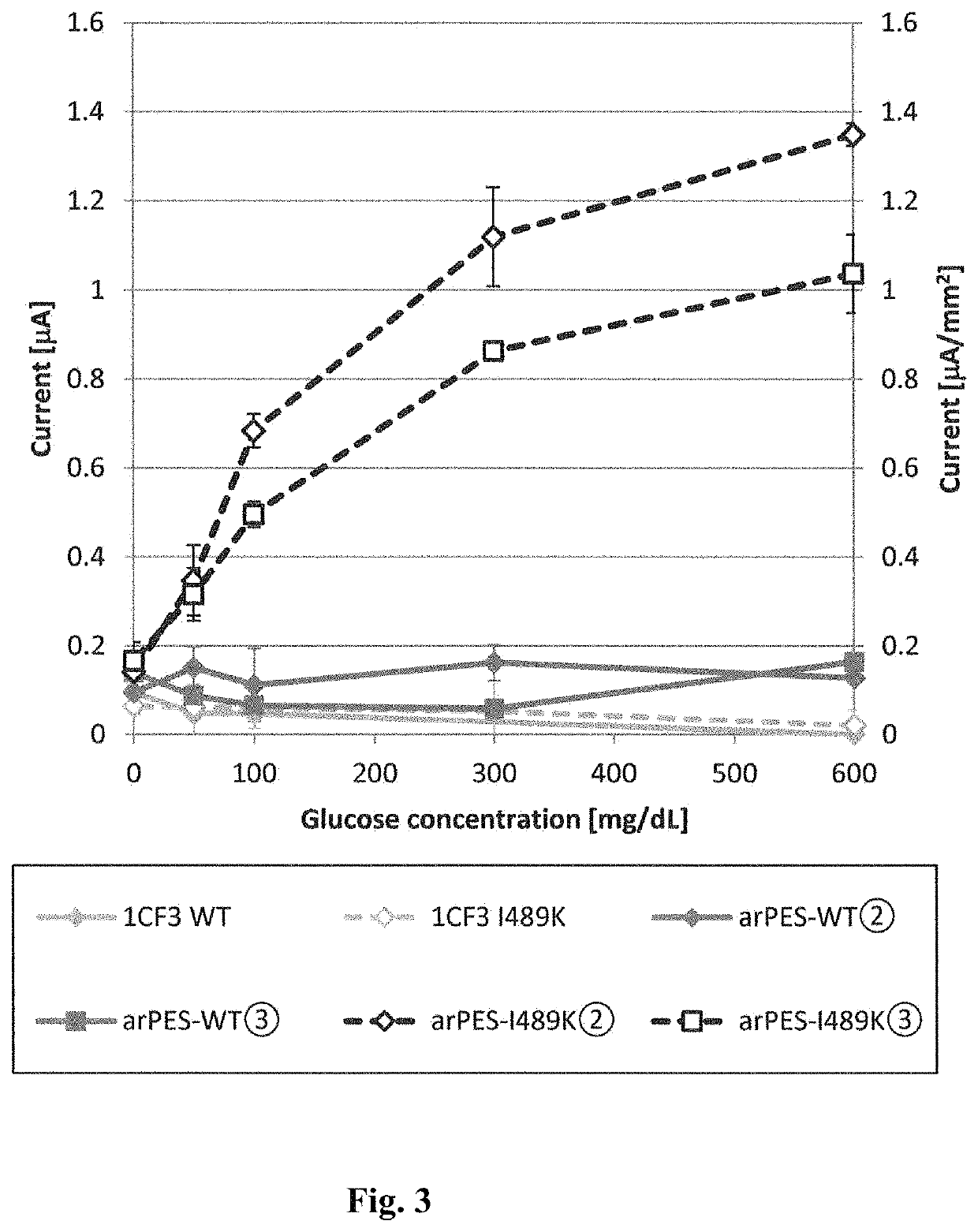Mutant glucose oxidase and use thereof
a glucose oxidase and glucose sensor technology, applied in the field of mutant glucose oxidase, can solve the problems of affecting the second-generation sensor, difficult application of glucose oxidase to the glucose sensor, etc., and achieve the effect of high substrate specificity
- Summary
- Abstract
- Description
- Claims
- Application Information
AI Technical Summary
Benefits of technology
Problems solved by technology
Method used
Image
Examples
examples
[0081]The present invention is described below more concretely by way of Examples. However, the present invention is not limited to the Examples.
[Introduction of Mutation]
[0082]An artificially synthesized wild-type Aspergillus niger 1CF3 structural gene was inserted into the pET30c vector to construct pET30c 1CF3 WT, which is a wild-type 1CF3 expression vector. Using this vector as a template, site-directed mutagenesis was carried out such that the isoleucine at position 489 was substituted with lysine. More specifically, using a commercially available site-directed mutagenesis kit (QuikChange II Site-Directed Mutagenesis Kit, Stratagene), codon modification of the 1CF3 structural gene contained in the pET30c 1CF3 WT was carried out such that the isoleucine at position 489 was substituted with lysine.
[0083]E. coli BL21 (DE3) was transformed with the thus constructed pET30c 1CF3 I489K or pET30c 1CF3 WT, to obtain a mutant 1CF3- or wild-type 1CF3-expressing E. coli.
[Method for Prepar...
PUM
| Property | Measurement | Unit |
|---|---|---|
| thickness | aaaaa | aaaaa |
| thickness | aaaaa | aaaaa |
| concentration | aaaaa | aaaaa |
Abstract
Description
Claims
Application Information
 Login to View More
Login to View More - R&D
- Intellectual Property
- Life Sciences
- Materials
- Tech Scout
- Unparalleled Data Quality
- Higher Quality Content
- 60% Fewer Hallucinations
Browse by: Latest US Patents, China's latest patents, Technical Efficacy Thesaurus, Application Domain, Technology Topic, Popular Technical Reports.
© 2025 PatSnap. All rights reserved.Legal|Privacy policy|Modern Slavery Act Transparency Statement|Sitemap|About US| Contact US: help@patsnap.com



